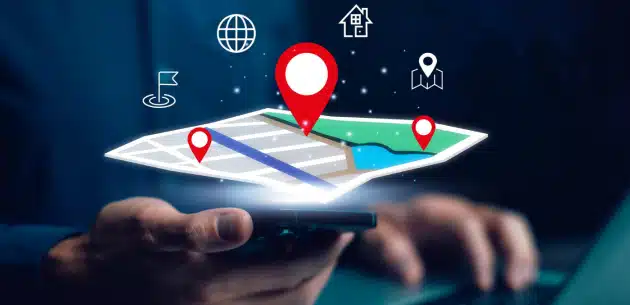You’re all set! You’ve created a new website or blog for your business. Now you want people to be able to find it. Getting Google to index your website quickly should be one of your immediate goals. People typically find your site through a search engine. Oftentimes, this happens when Googlebot crawls your website and add it to the Google index. You don’t want to wait for this. Getting Google to Index Your Website Quickly is what this article is about!
So how do you see that this happens as fast as possible? These are the fundamentals of how website content is crawled and indexed. There are also some great ways to get the Googlebot to your website or blog to index your content sooner rather than later.
Googlebot
Googlebot is the search bot software that Google sends out to collect information and documents on the web to add to Googles searchable index.
Crawling
Crawling is the the process when Googlebot goes around going from website to website, finding new and updated information to report back to Google. The Googlebot finds what to crawl using links.
Indexing
Indexing is the processing of the information gathered by the Googlebot from its crawling activities. Once documents are processed, they are added to Google’s searchable index if they are determined to be quality content. During indexing, the Googlebot processes the words on a page and where those words are located. Title tags and ALT attributes are also analyzed during the indexing process.
How Googlebot Works
So the question is, how does Googlebot find new content on the web such as your new website and blog or pages, or other peoples? It begins with web pages captured during previous crawl processes and adds in sitemap data provided by webmasters. As it browses web pages previously crawled, it will detect links upon those pages to add to the list of pages to be crawled.
Therefore; new content on the web is discovered through sitemaps and links. Now we’ll take a look at how sitempas on your website and links to it that will help the Googlebot discover new websites, blogs and content.
How To Get Your New Website or Blog Discovered
These are the best ways to get your website hit upon by the Googlebot. An added bonus is that some of it will help you get referral traffic to your new website too!
Create a Sitemap
A sitemap is an XML document on your website’s server that basically lists each page on your site. It tells search engines when new pages have been added and how often to check back for changes on specific pages. For example, you may want a search engine to come back and check your homepage daily for new products, news items, and other new content. If your site is built on WordPress, you can install the Google XML Sitemaps plugin and have it automatically create and update your sitemap for you as well as submit it to search engines. You can also use tools such as the XML Sitemaps Generator.
Submit Sitemap to Google Webmaster Tools
One of the first places you should take your sitemap for a new website is Google Webmaster Tools. If you don’t already have one, simply create a free Google Account, then sign up for Webmaster Tools.
Install Google Analytics
You’ll want to do this for tracking purposes regardless, but it certainly might give Google the heads up that a new website is on the horizon.
Submit Website URL to Search Engines
Some people suggest that you don’t do this simply because there are many other ways to get a search engine’s crawler to your website. But it only takes a moment, and it certainly doesn’t hurt things. So submit your website URL to Google by signing into your Google Account and going to the Submit URL option in Webmaster Tools. For extra credit, submit your site to Bing. You can use the anonymous tool to submit URL’s below the Webmaster Tools Sign In. This will also submit it to Yahoo.
Create or Update Social Profiles
As mentioned previously, crawlers get to your site via links. One way to get some quick links is by creating social networking profiles for your new website or adding a link to your new website to preexisting profiles. This includes Twitter profiles, Facebook pages, Google+ profiles or pages, Linkedin profiles or company pages, Pinterest profiles, and YouTube channels.
Share Your New Website Link
Once your have added your new website link to a new or preexisting social profile, share it in a status update on those networks. While these links are not followed, they will still alert search engines that are tracking social signals. For For Pinterest, pin an image from the website and for YouTube, create a video introducing your new website and include a link to it in the video’s description.
Bookmark It
Use quality social bookmarking sites like Delicious and StumbleUpon.
Create Offsite Content
To help in the link building process, get some more links to your new website by creating offsite content such as submitting guests posts to blogs in your niche, articles to quality article directories, and press releases to services that offer SEO optimization and distribution. Remember, this is about quality content afrom quality sites. You don’t want spammy content from spammy sites because that just tells Google that your website is spammy.
HOW TO GET YOUR BLOG DISCOVERED
Hopefully, your new website has a blog. And if it does, then in addition to all of the other options for your website, you can also do these things to help get your Blog found by Google.
Set up Your RSS with Feedburner
Feedburner is Google’s own RSS (Rich Site Summary or as it’s sometime referred to “Really Simple Syndication”) management tool. Sign up or in to your Google account and submit your feed with Feedburner by copying your blog’s URL or RSS feed URL into the “Burn a feed” field. Also, in addition to your sitemap, this will also notify Google of your new blog and each time that your blog is updated with a new post.
Submit to Blog Directories
TopRank has a huge list of sites you can submit your RSS feed and blog to. This will help you build even more incoming links. If you aren’t ready to do them all, at least start with Technorati as it is one of the top blog directories. Once you have a good amount of content, also try Alltop.
Conclusion
Finally, once your website or blog is indexed, you will begin to see more traffic from Google search. Also, getting your new content discovered with happen faster if you have set up sitemaps or have a RSS feed. To ensure that your new content is discovered rquickly, the best way is by sharing it on social media networks through status updates, especially on Google+.
Remember that blog content is generally crawled and indexed much faster than regular pages on a static website. Therefore; consider having a blog that supports your website. For example, if you have a new product page, write a blog post about it and link to the product page in your blog post. This will help the product page get found much faster by the Googlebot!
Good luck!

 Marina Lippincott
Marina Lippincott











